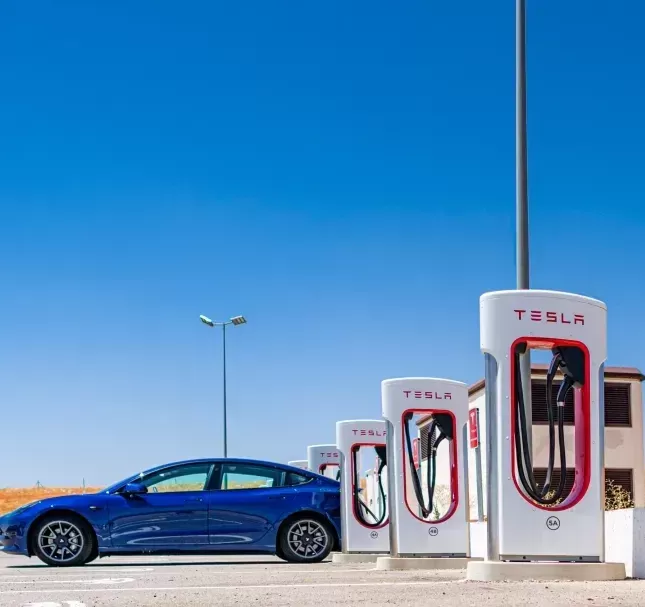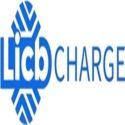Notifications

9 minutes, 52 seconds
-44 Views 0 Comments 0 Likes 0 Reviews

As a professional EV charger manufacturer in China, Topper Company provides reliable electric vehicle charging equipment and comprehensive charging solutions.
Tesla’s charging infrastructure is one of the most extensive and fastest in the world. In the UK alone, Tesla operates over 40,000 destination chargers and more than 1,100 rapid Superchargers. For years, only Tesla owners could fully utilize the Supercharger network. However, this is now changing.
As of May 2022, Tesla began opening its Superchargers to non-Tesla electric vehicles (EVs). This marks a significant shift in EV accessibility and convenience. If your vehicle supports the CCS (Combined Charging System) connector — standard in most modern EVs — you can now charge at select Tesla Superchargers. All you need is the Tesla mobile app to initiate and manage your charging sessions.
But how exactly does this work, and what does it mean for the broader EV community? Let’s explore.
Tesla’s decision to open its Supercharger network to non-Tesla EVs is driven by a combination of strategic, regulatory, and financial factors:
To Secure Government Funding
In the United States, the 2021 Bipartisan Infrastructure Law allocated $7.5 billion to expand the nationwide EV charging network. One key condition for accessing these federal funds is that charging stations must be available to all EV brands — not just proprietary networks like Tesla’s. To qualify, Tesla committed to opening portions of its Supercharger and Destination Charger networks to non-Tesla vehicles by the end of 2024.
To Drive Additional Revenue
Supercharging is no longer free for most Tesla owners, and non-Tesla drivers also pay for charging. Each charging session generates revenue, which grows as EV adoption rises. Expanding access creates a new, steady income stream beyond vehicle sales.
To Promote EV Adoption
Tesla’s mission is to accelerate the world’s transition to sustainable energy. Opening its charging network to all EV drivers reduces “range anxiety” and makes electric vehicle ownership more practical and appealing across the board.
As Tesla states on its official website:
“It’s always been our ambition to open the Supercharger network to non-Tesla EVs. Doing so encourages more drivers to go electric and supports our mission to accelerate the world’s transition to sustainable energy.”
Whether your EV can use Tesla chargers depends on the type of charger and your vehicle’s connector:
Type: Level 2 chargers (slower charging, ideal for overnight or long-term parking).
Locations: Hotels, restaurants, parking garages, retail locations.
Compatibility: Any EV with a Type 2 connector (standard in the UK and Europe) can use Tesla Destination Chargers.
Adapter Needed? Type 1 connector owners will require a Type 2 to Type 1 adapter.
Type: Ultra-fast DC chargers capable of adding up to 200 miles of range in just 15 minutes.
Compatibility: Non-Tesla EVs must have a CCS connector to use Superchargers.
Tesla App: Required to start, monitor, and end charging sessions since Superchargers lack onboard screens.
Availability: Not all Superchargers are open to non-Tesla vehicles yet — check the Tesla app to find open stations.
Charging a non-Tesla EV at a Tesla Supercharger is straightforward with a few steps:
Download the Tesla App
Available on iOS and Android, the app allows you to locate compatible Superchargers, initiate and stop charging, pay for electricity, and monitor your session.
Check Station Compatibility
Use the app to identify Superchargers currently open to non-Tesla EVs. Tesla is gradually expanding access.
Compare Pricing
Charging costs vary by location and time of day. The app shows kWh pricing so you can choose the best option.
Bring an Adapter (If Needed)
While UK/European Superchargers support only CCS for non-Tesla vehicles, adapters might be needed for Destination Chargers or other connector types.
Charging speed depends on several factors, including your car’s max DC fast-charging capability, battery condition, ambient temperature, and charger load.
Tests with vehicles like the Ford Mustang Mach-E and Rivian R1T show performance at Tesla Superchargers comparable to top-tier third-party DC chargers like IONITY or Electrify America — meaning many non-Tesla EVs can add up to 200 miles of range in about 15 minutes, if their battery supports it.
However, older or lower-spec EVs will charge at their maximum rated speed, regardless of the Supercharger’s capability.
In North America, Tesla uses its proprietary North American Charging Standard (NACS) plug instead of the universal CCS connector used elsewhere. Historically, this meant only Tesla vehicles could charge at Superchargers in the U.S. and Canada.
Starting in 2023, several major automakers—including Ford, General Motors, Mercedes-Benz, and Volvo—announced plans to adopt Tesla’s NACS connector for their upcoming EVs from 2025 onward. Meanwhile, Tesla provides adapters allowing CCS-equipped vehicles to access Superchargers using the NACS plug.
This move aims to unify charging standards across North America, with Tesla’s connector becoming a key part of the ecosystem.
Greater Charging Coverage: Non-Tesla EV drivers gain access to a vast, reliable network, reducing wait times and range anxiety.
Reliable Stations: Tesla’s Superchargers are known for high uptime and consistent performance compared to some third-party chargers.
Industry Standardization: As Tesla opens its network and automakers adopt NACS, the EV industry moves toward unified hardware and software standards—benefiting everyone.
Limited Availability: Not all Superchargers are open to non-Tesla vehicles yet; the rollout is ongoing.
Cable Reach: Tesla cables are designed for Tesla vehicles. Some EVs may require creative parking or extensions.
Pricing Models: Non-Tesla drivers may face higher prices and potential subscription plans for better rates.
Compatibility Issues: Early rollout users have reported occasional software glitches. Keeping your EV firmware and Tesla app updated helps.
The EV charging landscape is rapidly evolving toward open networks, universal connectors, and smart charging solutions. Government investments and industry collaboration are pushing the market away from brand-specific chargers.
Soon, most EV drivers—regardless of brand—will enjoy seamless access to fast, reliable chargers across highways and cities worldwide.
Tesla’s pivotal role in this evolution is evident. By opening its Superchargers to all EVs, Tesla not only grows its revenue but helps shape the future of sustainable transportation.
So, can any electric car use a Tesla charger? Not all, but many.
If your EV has a CCS connector (in Europe or the UK) or uses a NACS adapter (in North America), you may already be eligible to use Tesla Superchargers. Tesla Destination Chargers are even more flexible, accommodating a wide range of plugs with the right adapters.
As Tesla continues expanding access and more automakers adopt Tesla’s connector standard, the future of EV charging looks faster, more accessible, and more unified than ever before.Know more about Google SEO Directory
China EV Chargers EV Charger Manufacturer EV Charging Solutions

